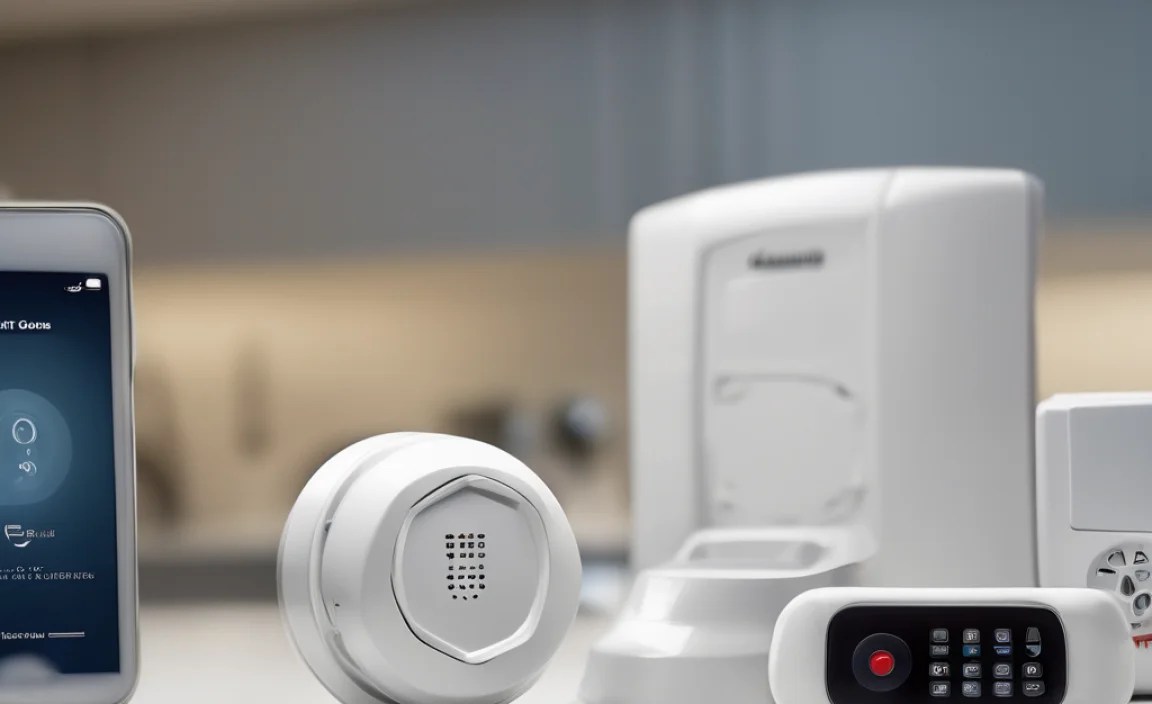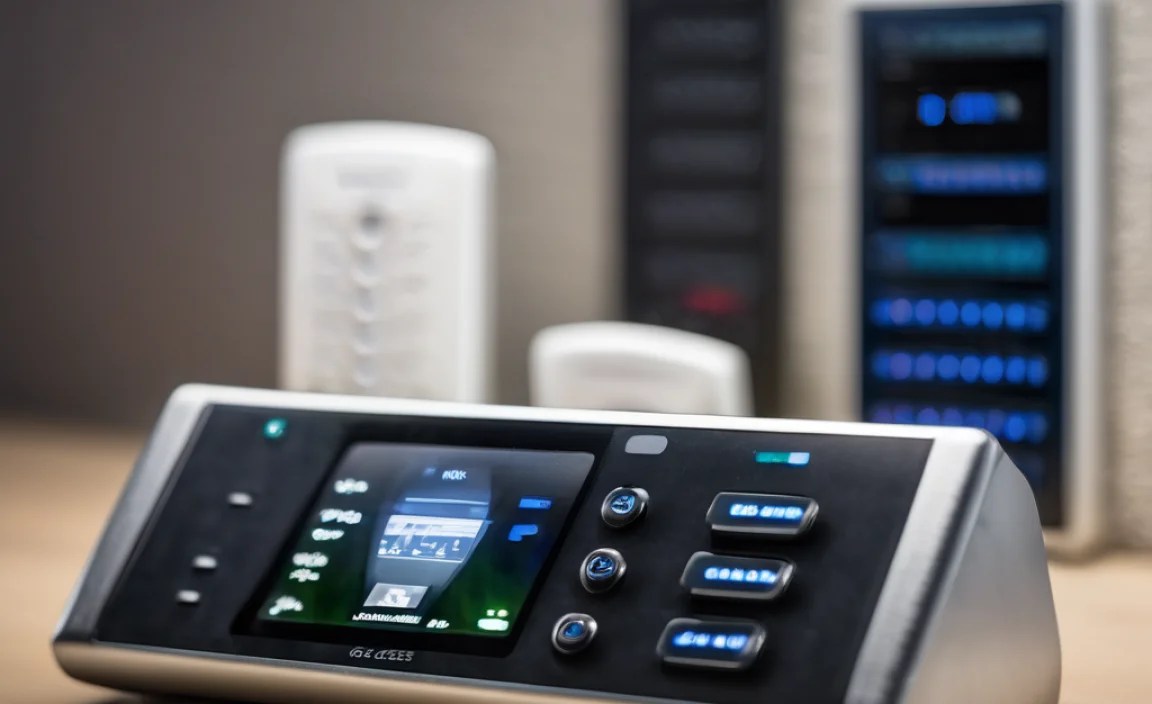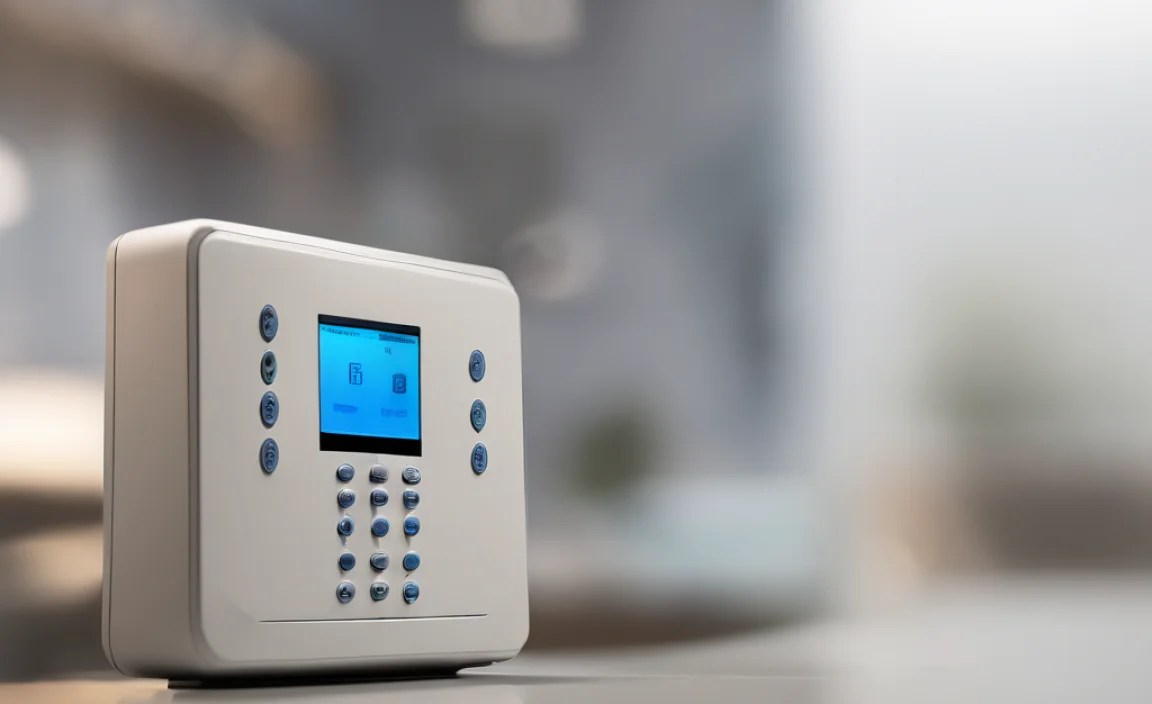C Class Alarm System: Your Ultimate Protection
The C-Class alarm system provides comprehensive, integrated security for your Mercedes-Benz, safeguarding against theft and unauthorized access with advanced sensors and intelligent alerts.
Owning a Mercedes-Benz C-Class is a rewarding experience, and ensuring its security is paramount. You might be wondering about the intricacies of your C-Class alarm system – what it does, how it works, and if it’s truly offering the “ultimate protection” promised. Many owners feel a bit uncertain about their vehicle’s security features, which can be frustrating. This guide aims to demystify the C-Class alarm system, breaking down its components and capabilities in a way that’s easy to understand. We’ll explore everything from basic functions to advanced settings, empowering you to utilize your car’s security to its fullest. Let’s dive in and ensure your C-Class remains as secure as it is sophisticated.
Understanding Your C-Class Alarm System: The Basics

Mercedes-Benz vehicles are renowned for their advanced technology, and the C-Class alarm system is no exception. Often referred to as the “Anti-Theft Alarm System,” it’s designed to be a sophisticated guardian of your vehicle, deterring potential thieves and alerting you to any suspicious activity. It’s not just a simple siren; it’s an interconnected network of sensors working seamlessly to protect your investment.
At its core, the C-Class alarm system is an integrated part of the vehicle’s electronic architecture. It relies on a combination of sensors strategically placed throughout the car, all managed by a central control unit. When the system is armed, it monitors for unauthorized entry or movement. If a breach is detected, it triggers a series of defensive measures, which typically include audible alarms, visual warnings, and sometimes even notifications sent to your connected devices.
Key Components of the C-Class Alarm System
To appreciate how your C-Class alarm system works, it’s helpful to understand its main components:
- Central Locking System: This is the foundation. When you lock your doors, the alarm system is typically armed. It ensures all doors, the trunk, and the hood are securely closed.
- Ignition Immobilizer: This crucial feature prevents the engine from starting without the correct key. It’s a passive system that deactivates when you insert a recognized key into the ignition.
- Door/Hood/Trunk Sensors: These switches detect if any of these access points are opened while the alarm is armed.
- Interior Motion Sensor: Often located in the overhead console, this sensor detects movement inside the cabin, helping to identify break-ins even if doors aren’t forced open. Some systems allow you to disable this for pets left inside.
- Tilt Sensor (Optional/Higher Trims): This advanced sensor detects if the vehicle is being lifted or towed, crucial for preventing theft via tow truck.
- Glass Break Sensors (Optional/Higher Trims): These sensors listen for the specific sound frequency of breaking glass, triggering the alarm before someone even enters the vehicle.
- Alarm Siren: The audible deterrent, usually located in the engine bay, designed to be loud enough to attract attention and scare off intruders.
- Hazard Lights/Turn Signals: These flash in conjunction with the siren to provide a visual alert.
- Alarm Control Unit: The “brain” of the system, processing signals from all sensors and deciding when and how to activate the alarm.
How the C-Class Alarm System Works

The operation of your C-Class alarm system is a well-choreographed sequence of events designed for maximum security. It’s managed by the Electronic Stability Program (ESP) module and the Body Control Module (BCM), working in concert to monitor your vehicle’s security status.
Arming and Disarming the System
Arming and disarming the C-Class alarm system is typically straightforward and integrated with your vehicle’s central locking system:
- Arming: When you lock your C-Class using the remote key fob or the door handle button (if equipped), the alarm system arms itself. It performs a quick check to ensure all doors, the hood, and the trunk are closed. The indicator light on the driver’s door or dashboard will typically start flashing rhythmically, signaling that the alarm is active.
- Sensors are Live: Once armed, all the designated sensors become active. They are constantly monitoring for any breaches or disruptions.
- Disarming: To disarm the system, you simply unlock the C-Class using your key fob or by inserting the key into the driver’s door lock and turning it. The flashing indicator light will stop, and the system will be deactivated.
Triggering the Alarm
If the alarm is armed and a sensor is tripped, the system initiates its protective response:
- Initial Detection: A sensor (e.g., a door opening, motion inside the car, or tilt detection) sends a signal to the alarm control unit.
- Verification: The control unit verifies the signal. For example, if a door is opened, it checks if the car is being legitimately unlocked with a key.
- Siren Activation: If the event is deemed unauthorized, the system immediately activates the alarm siren. This is usually a very loud, piercing sound designed to attract attention.
- Visual Alerts: Simultaneously, the hazard lights and turn signals begin to flash rapidly to provide a visual warning to anyone nearby.
- Engine Immobilization: In most cases, the alarm system also prevents the engine from being started, effectively immobilizing the vehicle.
- Duration: The alarm typically sounds for a set period (e.g., 30 seconds to a few minutes) before automatically silencing itself to prevent excessive disturbance. However, it will often re-arm itself and trigger again if the unauthorized condition persists.
Understanding the Status Indicator
Pay attention to the small LED indicator light, usually located on the driver’s door panel or the center console. Its behavior provides insight into the alarm system’s status:
- Flashing Slowly: The alarm system is armed and active.
- Solid Light (briefly) then off: The alarm system is disarmed.
- Flashing Rapidly: Indicates a fault or that the alarm has been triggered recently.
- Constant On: May indicate a system fault or a specific mode.
Advanced Features and Customization

Mercedes-Benz often equips its C-Class models with advanced security features that go beyond the basic alarm. These can enhance protection and offer greater convenience. These features are often managed through the vehicle’s infotainment system or specific switchgear.
Selective Door Unlock
The C-Class offers flexibility in how it unlocks. You can often choose to unlock only the driver’s door or all doors simultaneously when disarming the system, adding a layer of security by controlling access.
Interior Protection Disable
For situations where you might need to leave a pet or a passenger in the car while the alarm is armed (though not recommended for extended periods or in extreme temperatures), you can often disable the interior motion sensor. This prevents the alarm from being triggered by movement inside the cabin. The exact method for this varies by model year and trim, but it’s typically found within the vehicle’s settings menu on the central display or via a specific button.
Tow-Away Protection
Higher-spec C-Class models, or those equipped with optional packages, may include a tilt sensor. This sensor is highly effective against towing theft. If the vehicle detects any significant change in its angle (indicating it’s being lifted or tilted), it will trigger the alarm system.
Glass Break Sensor Integration
Similar to tilt sensors, glass break sensors are an advanced add-on. They use acoustic sensors to detect the specific sound frequency of shattering glass, offering an earlier alert than door sensors alone.
Personalizing Alarm Settings via COMAND/MBUX
Modern C-Class vehicles, especially those equipped with the COMAND infotainment system or the newer MBUX (Mercedes-Benz User Experience), allow for extensive customization of the alarm system. You can typically access these settings through:
- Navigate to ‘Vehicle’ settings on the central display.
- Select ‘Security’ or ‘Anti-theft alarm’.
- Here, you might find options to adjust alarm sensitivity, duration, sound types, and enable/disable specific sensors like interior monitoring or tilt sensors.
Always refer to your C-Class owner’s manual for the precise location and available options for your specific model year and configuration. For example, the Mercedes-Benz USA website offers digital owner’s manuals for many models.
Troubleshooting Common C-Class Alarm Issues

While the C-Class alarm system is generally reliable, like any complex electronic system, it can occasionally encounter issues. Understanding common problems can help you diagnose and potentially resolve them, saving you time and expense.
False Alarms
False alarms are one of the most common and frustrating issues. They can be triggered by various factors:
- Sensitivity: The interior motion sensor might be too sensitive, reacting to vibrations from heavy traffic, wind-blown debris, or even loud noises. In this case, disabling or reducing the sensitivity via the car’s settings is the solution.
- Faulty Sensors: A door, hood, or trunk sensor might be malfunctioning or misaligned, sending false signals that the entry point is open when it’s not. Inspecting these sensors for damage or obstructions and ensuring a proper seal is key.
- Electrical Issues: Low battery voltage can sometimes cause the car’s electronic systems, including the alarm, to act erratically. Check your C-Class’s battery health.
- Aftermarket Accessories: Poorly installed aftermarket electronics can interfere with the factory alarm system.
Alarm Not Arming
If your alarm system fails to arm (the indicator light doesn’t flash, or it flashes rapidly upon trying to arm), it usually indicates an open circuit or a sensor fault:
- Door/Hood/Trunk Ajar: The most common reason is that the car’s computer thinks one of these is not fully closed. Ensure all latches are properly secured. Sometimes, a faulty latch sensor can be the culprit.
- Key Fob Battery: A weak or dead battery in the key fob can prevent the car from receiving the arming signal. Try replacing the battery in your fob.
- System Fault: There might be a more significant issue with the alarm control unit or its wiring.
Alarm Not Disarming
If the alarm siren continues to sound even after you’ve unlocked the car, it could mean:
- Key Not Recognized: The car isn’t recognizing your key fob as legitimate. Try using the spare key fob.
- System Malfunction: The disarm signal is not being received or processed correctly by the car.
- Manual Override Needed: In some older systems, there might be a specific procedure to manually disarm it, often involving turning the key in the door multiple times or following a sequence. Consult your owner’s manual.
What to Do When the Alarm Won’t Stop
If you can’t stop the alarm from sounding:
- Use the Key Fob: Press the unlock button multiple times.
- Use the Key in the Door: Unlock the driver’s door manually with the key.
- Open the Hood: Sometimes, opening the hood can help reset the system or allow access to a switch.
- Check the Owner’s Manual: It will detail the specific procedure for your C-Class model.
- Disconnect Battery (Temporary Fix): As a last resort, you can disconnect the car’s battery to silence the siren. However, this will reset many of your car’s electronic settings, and you’ll need to re-arm the alarm system and potentially re-pair your key once it’s reconnected. This is a temporary measure and indicates a fault that needs professional attention.
For persistent issues, it’s always best to consult a qualified Mercedes-Benz technician or a reputable automotive locksmith specializing in luxury vehicles. They have the diagnostic tools to pinpoint the exact cause of the problem.
Security Enhancements and Aftermarket Options

While the factory C-Class alarm system offers robust protection, some owners may desire even higher security levels or specific features not available from the manufacturer. Fortunately, there are several avenues to explore.
Mercedes-Benz Accessories
Mercedes-Benz offers an official range of accessories designed to complement and enhance their vehicles’ security. These can include:
- Enhanced Alarm Systems: Some dealerships or accessory catalogs may list upgraded alarm modules that offer more advanced features, such as GPS tracking or remote notification capabilities.
- Tracking Systems: While not strictly an alarm, integrated tracking devices (often subscription-based) can be invaluable for recovering a stolen vehicle.
Reputable Aftermarket Alarm Systems
If you’re considering an aftermarket system, choose wisely. Look for:
- Brand Reputation: Stick with well-known brands like Viper, Clifford, or Compustar, which have a long history of producing reliable security systems.
- Integration: A good aftermarket system should integrate seamlessly with your C-Class’s existing electronics, particularly its central locking and immobilizer. Improper integration can lead to electronic gremlins.
- Features: Decide what you need: remote start, proximity sensors, GPS tracking, smartphone integration, or silent arming/disarming.
- Professional Installation: This is non-negotiable. An improperly installed alarm can cause more problems than it solves, from electrical shorts to voiding your car’s warranty. Seek out installers with experience working on luxury vehicles.
While aftermarket systems can offer cutting-edge features, they come with their own considerations. For instance, a smartphone-controlled alarm might offer immense convenience but could also be vulnerable to hacking if not properly secured. Researching security protocols is crucial. Furthermore, the Federal Trade Commission (FTC) advises consumers to be aware of cybersecurity risks associated with connected devices, including vehicles.
Thatcham Approved Systems (UK/Europe Focus)
In the UK and some European countries, insurance companies often prefer or require alarms that are “Thatcham Approved.” Thatcham Research is an organization that evaluates vehicle security systems. An approved system offers a guaranteed level of protection and can sometimes lead to lower insurance premiums. Always check with your insurance provider for their specific requirements. You can find a list of approved systems on the Thatcham Research website.
Maintaining Your C-Class Alarm System
Proper maintenance ensures your C-Class alarm system functions optimally, providing the reliable protection it’s designed for. Most of the maintenance is passive, but a few checks can go a long way.
Regular Checks
- Test Functionality: Periodically, arm and disarm your alarm to ensure it’s working correctly. Listen for the confirmation chirp (if enabled) and check that the indicator light flashes as expected.
- Battery Health: A weak car battery is a common cause of electrical glitches. Ensure your C-Class battery is in good condition. Most auto parts stores offer battery testing services, or your dealership can check it during routine maintenance for a nominal fee. According to AAA, a healthy car battery should maintain a voltage of at least 12.4 volts when the engine is off.
- Key Fob Batteries: Replace your key fob batteries when you notice a reduced range or intermittent response. Standard coin-cell batteries (like CR2032) are common in Mercedes fobs.
- Sensor Integrity: Visually inspect door, hood, and trunk seals for damage. Ensure they are clean and free from debris that might prevent proper closure and sensor activation.
Preventative Measures
- Avoid Extreme Temperatures: While Mercedes-Benz vehicles are built to withstand various conditions, prolonged exposure to extreme heat or cold can stress electronic components.
- Cleanliness: Keep sensors and their surrounding areas clean. Dirt and grime can interfere with their operation.
- Careful with Modifications: If you install aftermarket accessories, ensure they are done professionally and don’t interfere with the car’s original wiring harness.
When to Seek Professional Help
Do not hesitate to contact a Mercedes-Benz dealership or a certified independent specialist if you experience any of the following:
- Persistent false alarms
- Alarm system not arming or disarming
- Siren not sounding or constantly sounding
- Warning lights related to security system malfunctions on the dashboard
- Any issues after installing aftermarket electronics
These professionals have access to specialized diagnostic tools and Mercedes-Benz specific repair information that generic mechanics may not. This ensures that any repairs are performed correctly and the integrity of your vehicle’s complex electronic systems is maintained.






